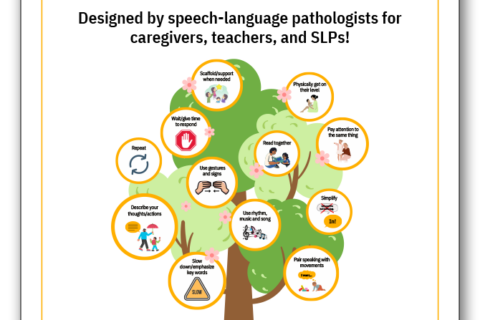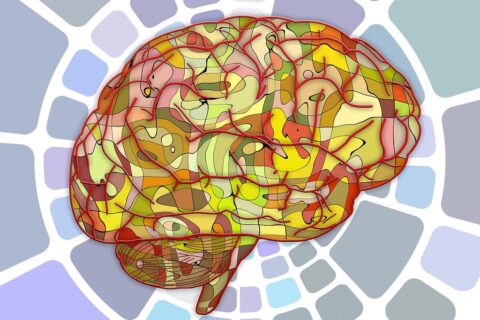Overcoming Slurred Speech After Stroke: Strategies and Success Stories

Strokes can be life-altering events, impacting various aspects of one’s health, including speech. One common challenge individuals face following a stroke is changes to their speech, such as slurred speech. This condition, known as dysarthria, can be distressing, affecting the ease and confidence one feels communicating. Some people may find it difficult to participate in social activities such ordering meals or group conversations with the effortlessness they once experienced. Persistent experiences like this can negatively impact one’s desire to engage in previously enjoyed activities and reduce overall quality of life. At Open Lines®, we understand the physical as well as the psychosocial complexities of recovering speech skills after a stroke. In this blog, we aim to shed light on why slurred speech (dysarthria) occurs after a stroke, define dysarthria symptoms, review available dysarthria treatment options, and describe how individuals can optimize for a successful recovery journey with the support of speech therapy for adults.
Understanding Slurred Speech after Stroke
Speech relies on the intricate balance between breath, voice (phonation), articulation of sounds and words, and resonance. These subsystems work together in a perfectly coordinated fashion to produce speech. Any disturbance or weaknesses to the muscles underlying the function of these systems will affect voice and speech–a condition known as dysarthria.
During a stroke, blood supply to different parts of the brain are interrupted. This can cause damage to those brain regions and affect how they function. When this occurs, crucial body functions, including speech, can be altered. Dysarthric speech after a stroke results from neurological changes in the area of the brain that control the muscles responsible for speech production. When this happens it can become hard to speak with adequate loudness, clarity, and comfort. Dysarthria does not impact cognitive skills. It is a motor control issue affecting the physical aspects of speech.
The severity and symptoms of dysarthria vary widely from person to person. Some may experience mild difficulties, while others may find it challenging to coordinate sounds and words or produce intelligible speech.
Symptom clusters may include:
- Difficulty regulating vocal loudness (too loud or too quiet)
- Nasal voice quality
- Strained voice quality
- Hoarse voice quality
- Breathy voice quality
- Speech that sounds choppy and effortful, because it is difficult to say more than a few words in one breath
- Limited vocal expressivity – may sound monotone
- Difficulty precisely articulating multisyllabic words due to difficulty coordinating movements of tongue, lips, cheeks, and mouth
- Difficulty controlling rate of speech that is too slow or very fast
Factors such as the location and extent of neurological disturbance, as well as individual health, motivation, social support system, and engagement in specialized speech therapy exercises and dysarthria treatment contribute to successful outcomes.
Treatment Strategies for Dysarthria
Speech therapy for adults targeting dysarthria treatment plays a central role in the rehabilitation process for individuals living with this condition. Our team of dedicated and experienced licensed speech-language pathologists work closely with patients and their care teams to develop personalized therapy plans. These plans target speech therapy exercises and activities to improve muscle strength, coordination, and control for improved ease and clarity of speech during everyday activities.
Numerous well-researched and evidence-based dysarthria treatments exist to enhance communication for individuals living with dysarthria.
In order to determine the best approach, every plan begins with an individual, one-to-one comprehensive evaluation with a licensed speech-language pathologist. Your speech-language pathologist takes a holistic approach, considering your medical history, symptoms, and strengths and weaknesses identified during testing portions of the evaluation. This personalized evaluation extends to examining your responsiveness to trialed speech therapy exercises, personal goals, and professional demands. Based on this thorough assessment, a tailored dysarthria treatment plan is crafted with techniques designed to enhance your communication skills to meet your unique needs as quickly as possible.
These techniques may encompass training in optimal posture and breathing, coupled with interventions to regulate rate of speech, and vocal amplitude (loudness) for improved respiratory-phonatory-articulatory coordination. Pacing strategies and other approaches are often employed to enhance articulatory coordination and precision, contributing to clearer and more effective communication.
Dysarthria can also affect the natural intonation and rhythm of speech. When needed, speech therapy exercises will incorporate targeted strategies to enhance prosody, helping individuals convey meaning through variations in pitch, stress, and rhythm.
For individuals with severe dysarthria, augmentative and alternative communication (AAC) devices may be recommended alongside motor-speech based interventions. These devices support individuals’ capacity to express themselves using tools such as speech-generating devices, communication boards, or other assistive technologies.
The Open Lines Difference
At Open Lines®, all of our clinicians undergo highly specialized training in LSVT LOUD®, recognized internationally as the gold standard dysarthria treatment for individuals with neurologically based communication disorders. Research on LSVT LOUD® treatment specifically in post-stroke populations has demonstrated positive outcomes.
For eligible individuals, this approach involves training in optimizing healthy vocal loudness. The singular cue “loud” leads to greater amplitude of movement across the entire motor speech system, resulting in a stronger and clearer voice and speech. Research-backed benefits include substantial improvements in vocal quality, as well as enhanced strength, coordination, and endurance of the entire motor-speech system, ultimately promoting greater ease, comfort, and intelligibility in speech for those recovering from dysarthria after a stroke. The findings emphasize the effectiveness of LSVT LOUD® in promoting meaningful improvements in speech-related outcomes for individuals experiencing dysarthria after a stroke.
Duration of Treatment and Recovery
When it comes to retraining skills and building neurological connections, intensity and repetition matters! Consistency in attending speech therapy sessions, practicing recommended speech therapy exercises, and actively participating in the rehabilitation process are key components of a successful recovery journey. Early intervention is crucial for optimal outcomes. Starting speech therapy as soon as possible after a stroke capitalizes gains though we want to assure you that progress is possible at any stage in the recovery process.
Individual factors also play a role in shaping recovery. The duration of dysarthria treatment can vary based on the severity of the condition, overall health, and response to therapy. It’s important for individuals and their families to approach the speech therapy for adults recovery process with patience and a spirit of perseverance!
While some individuals may experience noticeable improvement within a few weeks, others may require more extended periods of therapy. The goal is not just to address the immediate challenges but also to equip individuals with the skills and strategies needed for long-term communication success.
Success Stories: Inspiring Hope
At Open Lines® , we’ve been part of inspiring success stories, joining individuals in their recovery journeys, and witnessing and supporting their remarkable achievements made with dysarthria treatment. This story highlights the resilience, dedication, and progress achievable through scientifically founded, tailored treatment plans and unwavering commitment.
Meet Jerry:
Jerry was in his mid sixties and a partner at his law firm in one the country’s largest cities when he experienced a stroke in January. The stroke profoundly affected Jerry’s ability to speak which complicated his ability to communicate with his carepartners, connect with friends and family, and perform everyday activities. In April of that same year, he reached out to Open Lines® director, Dr. Jessica Galgano, to initiate speech therapy for adults. Following a comprehensive week-long evaluation, Jerry was diagnosed with Wernicke’s Aphasia and dysarthria. Based on his symptoms, identified needs and goals, and responsiveness to trialed speech therapy exercises, a personalized plan of action was set in motion. Daily speech therapy was initiated using the LSVT LOUD® dysarthria treatment to first address difficulties with speaking (dysarthria) in order to meet the most pressing daily demands that Jerry identified during his evaluation. Now several years in recovery, Jerry reflects,
“I know my ability to talk is much better now – I couldn’t even talk for the first two years!
There is no question I have had the ability to talk more competently. I couldn’t be a lawyer starting over right now, but I have the ability to talk, and though I still feel like I have problems, other people think I am typically functioning, and my ability to have this conversation is light years ahead of where I was two years ago.”
Dysarthria, while presenting its challenges, is not an insurmountable obstacle. Open Lines® team encompasses a team of dedicated, world-renowned experts with decades of clinical experience providing compassionate care and innovative solutions to those working to retrain their speech following a stroke.
If you or a loved one is navigating the journey of speech recovery after a stroke, remember that you are not alone. Our team is here to support you every step of the way, offering personalized speech therapy for adults, evidence-based dysarthria treatment, and the encouragement needed for a successful recovery. Together, let’s embark on the path to confident communication.
If you’re struggling with communication difficulties, it’s time to turn to Open Lines®. Contact us via phone (212-430-6800), email [email protected], or by filling out our convenient contact form. Improve your communication skills and unlock your potential with Open Lines® Speech and Communication in New York today!
Get in Touch With Open Lines®














